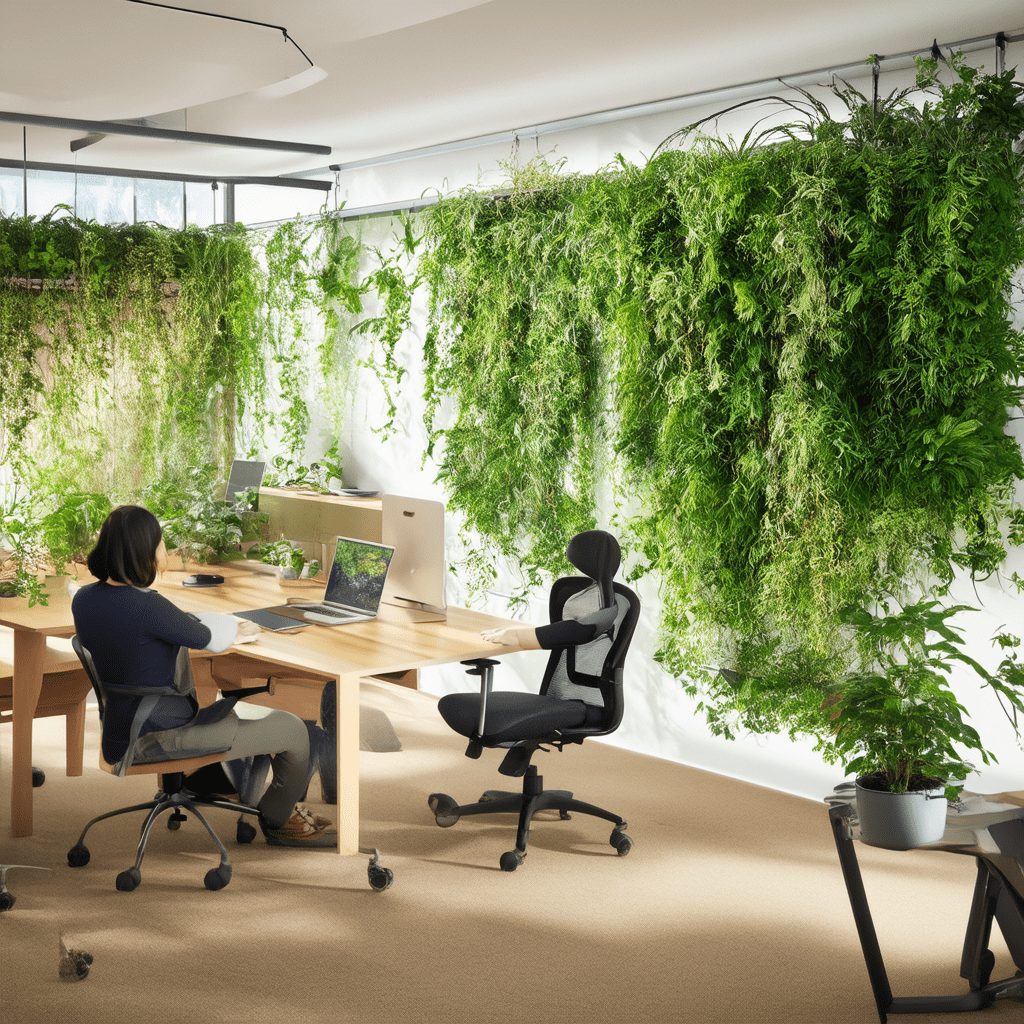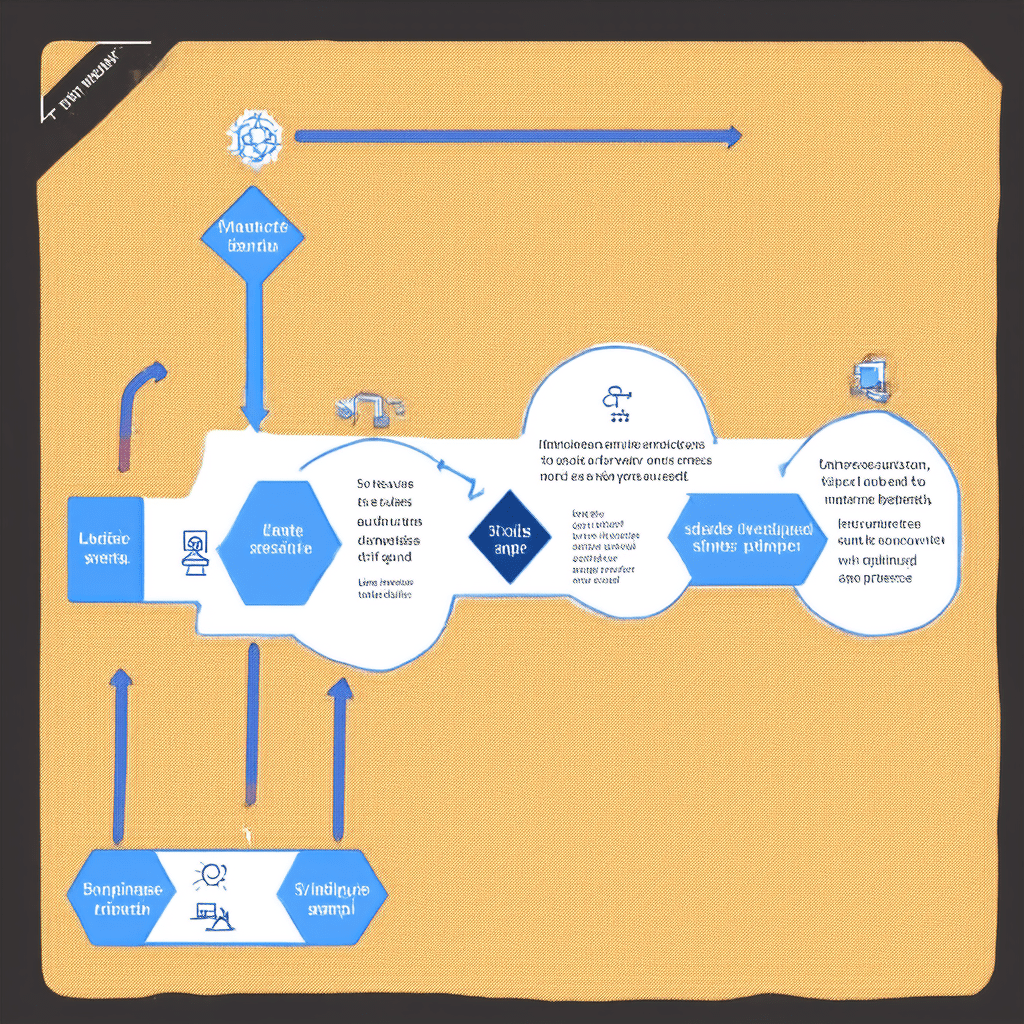Introduction: A Deep Dive into Biophilic Design
Table of Contents
Biophilic design is more than just a nod to nature; it’s a deliberate effort to incorporate the outdoors into our everyday indoor spaces. This isn’t a newfangled trend; it’s a practice with roots as deep as ancient Greek gardens and Roman courtyards, where nature was central to daily life. What sets today’s biophilic design apart is the integration of advanced technology, particularly artificial intelligence, to create sustainable and harmonious living spaces. (Read our full guide on AI Tools and Applications.)
Imagine a building that adjusts its lighting based on the position of the sun or alters its temperature to mimic the gentle cooling effect of a forest canopy. AI makes this possible, using data and algorithms to optimize the use of natural resources while enhancing human comfort. For example, smart windows can change opacity to control sunlight and heat, reducing energy consumption. In Singapore, the iconic Marina Bay Sands hotel features a massive sky garden, utilizing AI to maintain optimal conditions for the plants that thrive there.
Biophilic design isn’t just about aesthetics or energy savings. Studies have shown that environments with natural elements can reduce stress, improve mood, and boost productivity. Imagine an office space where digital interfaces display calming natural landscapes or where AI-driven soundscapes simulate the gentle rustle of leaves or the soothing sound of rain. These elements have been shown to reduce heart rates and lower cortisol levels, promoting a sense of well-being and relaxation.
From a practical standpoint, integrating nature with AI can also promote biodiversity. Green roofs and walls, supported by AI irrigation systems, provide habitats for birds and insects in urban areas where natural spaces are scarce. By merging technology with nature, we create not just buildings, but ecosystems that support life in all its forms.
The key takeaway here is that biophilic design, enhanced by AI, is reshaping how we think about sustainability and well-being in our living spaces. It’s not just about bringing the outside in; it’s about creating a symbiotic relationship between the built environment and the natural world, one that benefits both people and the planet.

Key Benefits and Advantages
Adopting biophilic design principles in architecture isn’t just a fleeting trend—it’s a transformative approach that could redefine urban living. Imagine a building where natural light floods into every corner, plants thrive on living walls, and air circulates freely, filtered by both technology and nature’s own systems. These aren’t just aesthetic choices; they’re strategic decisions that lead to healthier, more efficient living spaces.
Consider the air quality improvements alone. In my experience, integrating natural elements like indoor gardens and air-purifying plants can significantly reduce indoor pollutants. A study from the Journal of Environmental Psychology highlights that occupants in such environments report feeling more alert and less stressed, which is a testament to the mental health benefits of bringing nature inside.
From an energy perspective, biophilic design aligns seamlessly with state-of-the-art technology. Smart windows that adjust tint based on sunlight and green roofs that naturally insulate buildings are just a couple of examples. These innovations don’t just save energy; they create a harmonious balance between comfort and sustainability.
Economically, the benefits are substantial. Buildings that weave nature with technology often see a rise in property values. Developers have noticed that these spaces attract a demographic keen on sustainability, willing to pay a premium for a healthier lifestyle. For instance, a property in Singapore that incorporates extensive green architecture saw a 20% increase in rental yields within the first year of renovation.
Socially, the impact extends beyond individual well-being. Such designs foster community interaction. Parks and communal gardens within residential complexes encourage residents to engage with one another, breaking down the sterile, isolating walls of traditional urban living. In essence, biophilic design isn’t just about structures; it’s about building communities that thrive both physically and socially.
- Natural light is a powerful ally in our daily lives, far beyond its role in simply lighting up a room. Imagine waking up to the gentle, warm glow of the sun streaming through your window. This natural light not only beautifies your space but also triggers your brain to release serotonin, a mood-enhancing hormone. Scientific studies back this up, showing that exposure to natural light helps reset our circadian rhythms, which are our internal body clocks. This means better sleep at night and more sustained energy levels during the day. In contrast, artificial lighting can disrupt these rhythms, leading to sleep disorders and mood swings. So, by designing spaces with ample natural light, we’re not just creating visually appealing environments; we’re fostering healthier, happier lives.
- Plants and natural materials in our surroundings do more than decorate. They reconnect us with nature, reducing stress and anxiety. Picture a workspace filled with lush greenery and natural wood textures. It’s not just about looks; it’s a sanctuary for the mind. Research suggests that being around plants can lower blood pressure and cortisol levels, the hormones associated with stress. In practical terms, this means a more relaxed and productive environment. By bringing elements of nature indoors, we’re creating spaces that nurture our mental well-being.
- When it comes to improving air quality, natural design elements like green walls and wooden surfaces are unsung heroes. These features act as natural air purifiers. For instance, plants can absorb toxins such as benzene and formaldehyde, releasing oxygen in return. This is crucial in urban areas where air pollution is a growing concern. Cleaner air means fewer respiratory issues and overall better health. So, incorporating these elements into our living and working spaces isn’t just a design choice; it’s a proactive step towards a healthier lifestyle.
- Noise can be a major disruptor in our daily lives, affecting our concentration and peace. Natural elements offer a solution by contributing to noise reduction. Imagine a room buffered by the soft rustle of leaves from an indoor plant or the calming presence of wooden textures that absorb sound. These elements create a quieter, more serene environment, perfect for focusing on work or simply unwinding. It’s about creating spaces that support our need for tranquility in a noisy world.
- Energy efficiency is a critical concern in building design, and nature provides a clever solution. Green roofs and walls act as natural insulators, reducing the need for artificial heating and cooling. This means significant energy savings and lower utility bills. For example, a green roof can lower the temperature of a building by up to 6 degrees Celsius in summer, reducing air conditioning costs. By integrating these elements, we’re not just enhancing the aesthetic appeal of buildings; we’re making them more sustainable and cost-effective.
- Urban areas often struggle with biodiversity loss, but integrating natural habitats into buildings can help. Imagine a cityscape where buildings are dotted with green roofs and walls that provide habitats for birds, bees, and butterflies. This not only supports local wildlife but also promotes ecological balance. These green spaces can act as stepping stones for species, helping them thrive in urban environments. By enhancing biodiversity in our cities, we’re fostering a healthier ecosystem that benefits humans and wildlife alike.
How It Works: A Practical Explanation
In sustainable architecture, AI’s influence stretches far beyond just automation and cost-cutting energy measures. It’s about using AI to create smarter, more efficient, and genuinely sustainable spaces. Imagine a building equipped with AI-driven systems that seamlessly predict, analyze, and manage its resources, resulting in unparalleled levels of efficiency.
Take predictive analytics, for example. These systems can forecast energy needs by analyzing weather trends and occupancy habits. In practice, this means that heating and cooling systems adjust in real-time, ensuring comfort while minimizing waste. On a particularly sunny day, the system might decide to lower the blinds to reduce the cooling load or adjust its energy usage based on the building’s occupancy at different times of the day.
Water management also benefits from AI. Smart irrigation systems, driven by AI, optimize watering schedules and amounts by considering factors like soil moisture, weather forecasts, and plant needs. This precision ensures that not a drop is wasted, which is a crucial aspect of sustainable living, especially in areas prone to drought.
A real-world example of AI’s impact is Google’s DeepMind, which managed to cut energy consumption in their data centers by a staggering 40%. This was achieved by implementing AI to optimize cooling processes, proving that AI can dramatically enhance resource efficiency.
The key takeaway is that AI doesn’t just automate—it innovates, offering solutions that are both practical and sustainable. As we look to the future, the integration of AI in building management systems promises not only to reduce environmental impact but also to set new standards for sustainable living.

Case Study: A Real-World Example
Biophilic design is more than just a fusion of architecture and greenery. It’s about creating environments that resonate with our innate connection to nature, a principle known as biophilia. When we integrate outdoor elements into indoor spaces, we’re not just transforming the aesthetic appeal; we’re actively enhancing our well-being. Consider how natural light streaming through large windows can elevate your mood. It’s not just about seeing better; it’s about feeling more alive.
In my experience, spaces that incorporate nature are like a breath of fresh air in our often sterile urban environments. For example, imagine an office with a living green wall. Not only does it purify the air, but it also serves as a calming presence, reducing the stress typically associated with high-pressure work settings. This isn’t just a theory. A study by the University of Exeter found that introducing plants into workspaces can boost productivity by 15%.
Take the Bosco Verticale in Milan, a stunning example of how biophilic design can transform urban living. These vertical forests aren’t just visually striking; they actively combat air pollution and noise, creating a healthier environment for residents and local wildlife. Similarly, the Amazon Spheres in Seattle create a unique workspace that immerses employees in a rainforest-like setting, fostering creativity and collaboration.
The key takeaway here is that biophilic design isn’t a luxury—it’s a necessity. As we continue to urbanize, integrating nature into our daily lives becomes crucial for our mental and physical health. It’s about creating spaces where we can thrive, not just survive.
Conclusion: Key Takeaways
In my experience, the fusion of AI and nature in design isn’t just a passing fad. It’s a transformative approach that’s reshaping how we think about sustainability in our built environments. Imagine a home that senses your presence and adjusts its lighting to mimic the natural progression of daylight, conserving energy while enhancing your well-being. This isn’t science fiction; it’s happening now.
Consider urban areas where AI-driven systems are being used to analyze and manage green spaces efficiently. These systems predict and adapt to weather changes, ensuring that plants receive optimal care without wasting resources. From a practical standpoint, this means less water usage and healthier ecosystems, which is crucial for cities grappling with climate change.
Moreover, AI can personalize interior environments to suit individual needs, promoting mental health and productivity. For instance, AI algorithms can learn your preferences for air quality, temperature, and even noise levels, creating an atmosphere that supports your daily activities and long-term health.
A common mistake I see is assuming these technologies are out of reach or too futuristic. Yet, many of these innovations are becoming standard in new developments. The key takeaway here is that by integrating AI with natural elements, we can craft spaces that not only reduce our carbon footprint but also foster a deeper connection between humans and the environment. This holistic approach is essential for building a sustainable future that benefits everyone.

